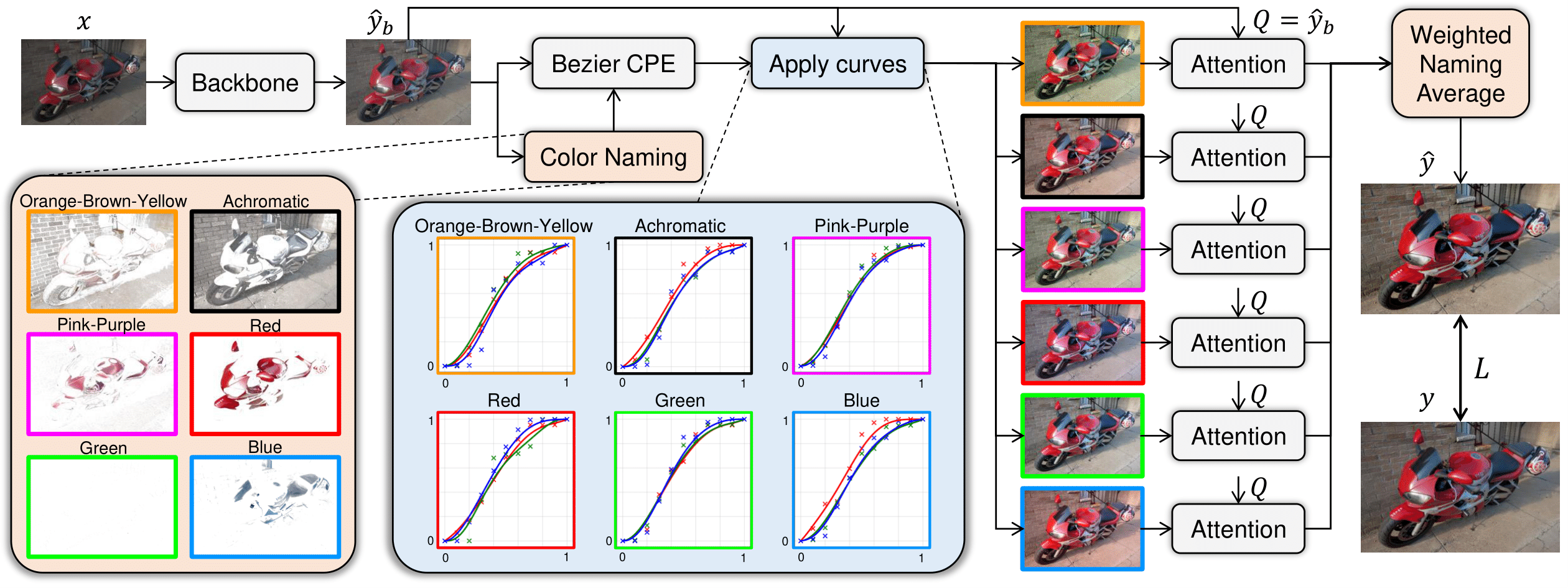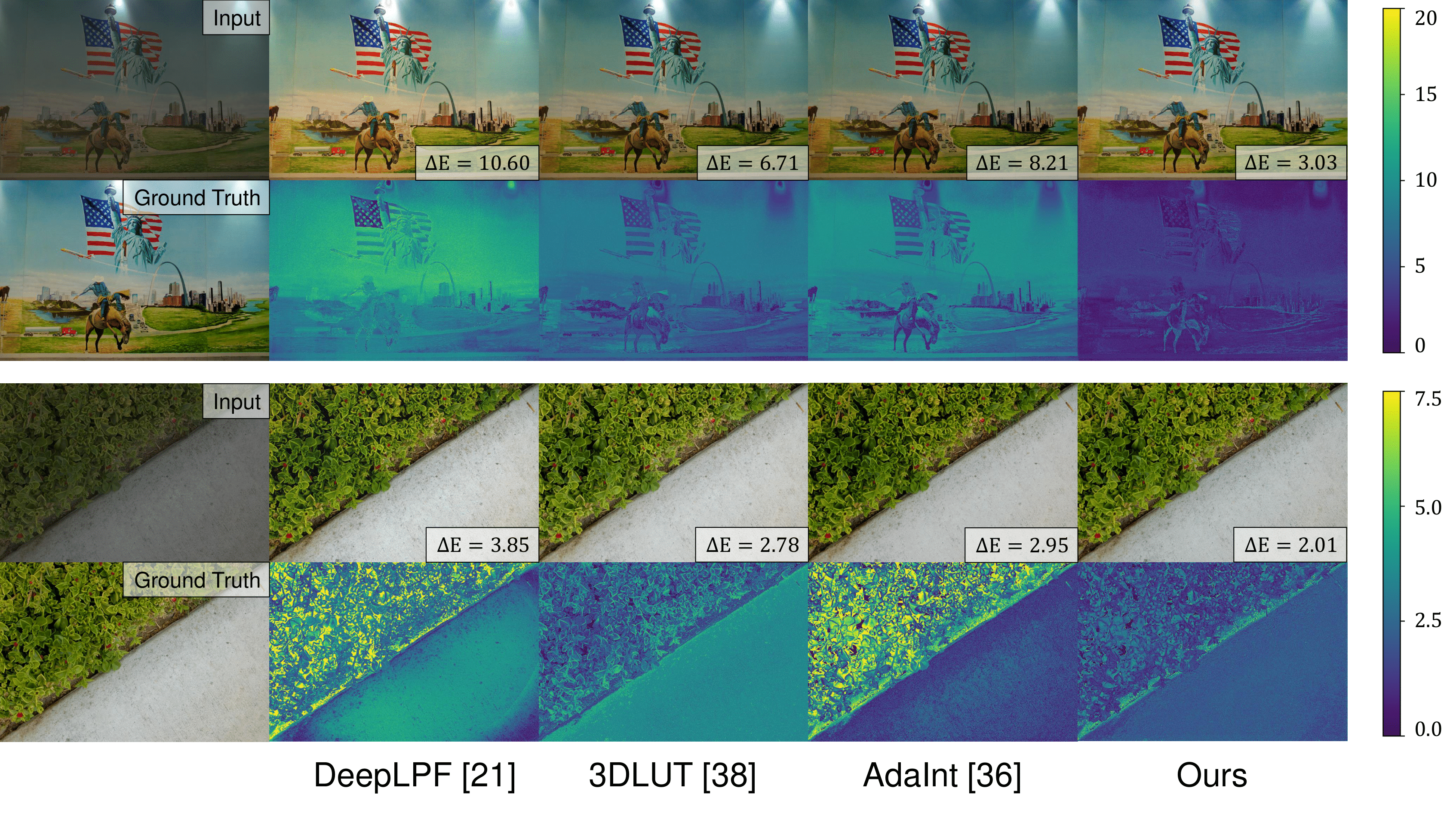A popular method for enhancing images involves learning the style of a professional photo editor using pairs of training images comprised of the original input with the editor-enhanced version. When manipulating images, many editing tools offer a feature that allows the user to manipulate a limited selection of familiar colors. Editing by color name allows easy adjustment of elements like the "blue" of the sky or the "green" of trees. Inspired by this approach to color manipulation, we propose a learning-based image enhancement technique that separates the image into a small set of named colors. Our method learns to globally adjust the image for each specific named color via tone curves and then combines the images using an attention-based fusion mechanism to mimic spatial editing. We demonstrate the effectiveness of our method against several competing methods on the well-known Adobe 5K dataset and the PPR10K dataset, showing notable improvements.
Our method aims to enhance a low-quality RGB input image x, by a learned model that outputs an enhanced version y. This enhanced image is derived as close as possible to the expert-retouched image y, based on some objective function L.
Our approach consists of four main components. First, it applies a DNN backbone that standardizes the input image into a canonical latent space. Next, we use color naming to decompose the image into six color maps. After color naming decomposition, a neural network learns a set of Bezier tone curves to manipulate each color map globally. Finally, an attention mechanism is used to fuse the edited images to achieve local editing effects.

We compared out method with SOTA methods using MIT5K and the PPR10K datasets. We follow the same evaluation metrics as the current methods. Our full architecture outperforms contemporary curve estimation, image-to-image and LUT-based methods.
Our method leverages Color Naming and tone curves to retouch the image globally and the attention mechanism to fuse the globally-adjusted images with local manipulations. However, previous local methods (DeepLPF) struggle to addres color cast and artifacts while previous global methods (3DLUT) show limitations in intrincate details.

@article{serrano2024colorcurves,
author = {Serrano-Lozano, David and Herranz, Luis and Brown, Michael S. and Vazquez-Corral, Javier},
title = {NamedCurves: Learned Image Enhancement via Color Naming},
journal = {ECCV},
year = {2024},
}